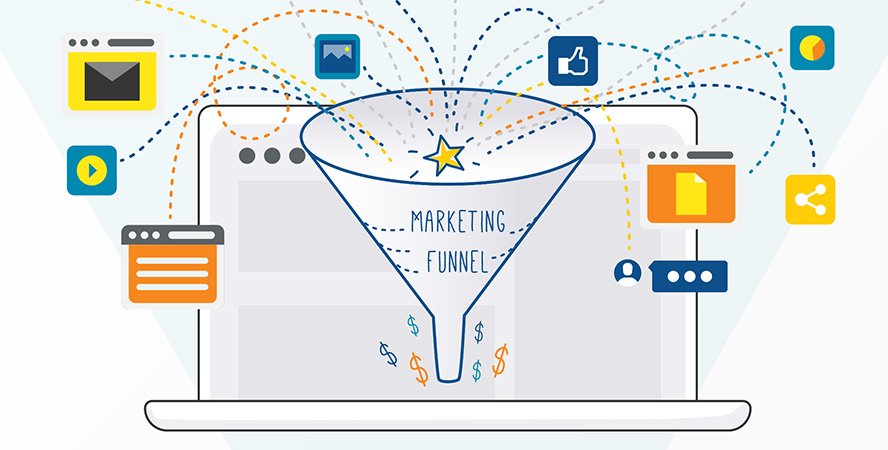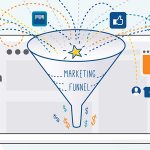Once you have successfully used your content marketing strategy to generate website traffic, you need to focus on converting that traffic into customers.
Conversion rate optimization (CRO) is both an art and a science. The art is in drawing customers in and appealing to their hopes, ambitions and needs. The science is enticing them to take an action based on those feelings.
We’ve put together some quick tips to help you navigate conversion optimization.
1. It’s all about decisions.
What constitutes a conversion? Simply put, a conversion is any time a customer takes an action that results in that customer moving further down your marketing funnel or in completing a purchase. Many marketers like to draw a distinction between ‘macro-conversions’ and ‘micro-conversions.’ A macro-conversion is revenue-based, such as purchasing a product from a website, subscribing to a service or requesting a quote. A micro-conversion is intent-based, like signing up for a newsletter, creating an account or adding a product to a cart. At the end of the day, they’re both important goals, and you can optimize for both. Although micro-conversions may not seem as exciting as macro-conversions, they’re important for leading prospects down the path to an eventual purchase. They indicate interest in your products or services on the part of a prospective customer. Depending on your business, you may never have macro-conversions on your website at all. In those cases, micro-conversions are even more important because they’re the measure that your site is working. Conversion optimization is focused on guiding the customer through their questions and fears to the point where they are willing to give you some of their valuable time, energy, information or money. Customers go through a journey before they are ready to spend money. They research, they compare, they investigate. It’s important to have content optimized for every step of that process. For a customer in a research phase, you want to invite them to find out how something works instead of asking them to make a purchase right out of the gate. In other words, don’t ask them to marry you on the first date.2. Know your audience.
Marketing to everyone simply does not work. The more specific you can get with your audience, the more likely you’ll be able to convert them. One common way to perfect your messaging in a marketing campaign or website is by getting help from your sales team to create a typical customer persona. Here’s an example: Gordon is an operations director at a mid-sized American manufacturing company. He’s 42 and looking to move up even further in the company. He knows that inventory management is a huge time drain that is very rarely accurate. Being very tech-savvy, Gordon has wondered if things like barcode scanners or drones might hold the key to solving his inventory problem. This is a good picture of a customer. It tells us that Gordon is senior level, technically proficient, and he likes accuracy and efficiency. He’s also not afraid to try new things. From this starting point, you can mimic Gordon’s journey through the web to get a better idea of how he might shop for your inventory management system. How might he word his online search on Google? What type of blog title would grab his attention in social media? What type of eBook or webinar would he be eager to sign up for in AdWords? Personas aren’t just useful in conversion optimization, they can also help you with product development, content ideas and so much more. After all, they’re an archetype of your customer.3. What can you offer to begin leading them down the sales conversion funnel?
Website conversion optimization begins by delivering content that visitors find useful. You should focus on creating content valuable enough that your audience will be willing to trade their precious time, attention and contact information to access it. Good places to start include:- eBooks
- Webinars
- ROI Calculators
- Demos
- Coupons
- Events
- Newsletters
4. Increase conversion rates by designing your website for your consumer.
Don’t underestimate the importance of content design. Eye-tracking studies make it possible to predict where on the page visitors are likely to be looking and, therefore, where your most important content should be placed and how to build your website content strategy. The human eye scans for items of interest relevant to a person’s reason for being on the site. The eye will skim over content and linger on potentially interesting elements. According to a study conducted by Nielsen Norman Group, 79% of people scan web pages, while only 16 percent read every word. Providing more white space around headlines and chunks of texts, allows the eyes to scan more easily and decipher if the content is useful or not. Your CTA should be a prominent aspect of your site. That’s where the money is, after all. As peoples’ eyes are scanning the page for interrupters, your CTA should contrast with everything else in order to draw attention. Bright contrasting colors are good for buttons. Orange is particularly popular as it’s not as aggressive as red but still conveys urgency.5. How to make forms work for you.
Whether they’re signing up for a service, requesting a demo or purchasing a product, getting prospective customers to complete and submit forms is vitally important. When implementing a form, consider the least amount of information you need to accomplish the task. Your contact form may not need to include more than a few fields for the person’s name, company and an email address. You might also consider giving them the option to share their current pain point or need as well. If you’re registering a new user, obviously you may want to gather more information but again, stick to what’s vital, not what’s nice to have. You can always give them the option to update their profile later. (Or implement a ‘progressive profiling’ plan in which you accumulate a bit more information with each interaction.) Allowing users to indicate they are interested in additional information via a drop-down menu or checkbox minimizes the chances of scaring off prospects who are not quite ready to convert. If you need to gather more than four pieces of information, consider using a form broken into multiple pages to create the illusion of a simple process. Include a progress bar to mitigate any anxiety and reduce the likelihood that the customer will bail out before the end. Another effective but slightly more advanced method is to use ‘progressive profiling’ to get a bit more information from prospects with each new form they fill out.6. Pop-ups are valuable, but don’t overdo them.
Pop-ups and overlays are still popular on the web, and using them can be very effective in conversion optimization. The trick to using a pop-up without annoying your site visitors is to focus on usability, value and relevance. Pop-ups should add something to the experience, not merely interrupt it.- Live-chat pop-ups are not as invasive as others and allow you another opportunity to reach the consumer when other CTAs fail. A word of warning, these should have a delay on them so that you’re not intruding before your visitor has had a chance to read the page. (Also, if no one is on the other end of your chat, turn it off!)
- Mid-page pop-ups, whether they are on a landing page, a product page or a blog, work best when introduced past the fold because that’s where user engagement peaks.
- Exit pop-ups are also great in grabbing customers who may have missed your initial CTA or need an additional nudge to convert. Using mouse-tracking software, it’s possible to track when a visitor is about to exit or back out of a page. This is the perfect opportunity to hit them up with a coupon or offer that is only valid that day.
- Whenever you add a pop-up, don’t forget this: Make it easy to close or people will abandon your site in droves. One last note on pop-ups — don’t spam visitors every time they’re on the site. Use your cookies to selectively target your visitors and stop showing them pop-ups after a certain number of visits. Three times a week should be your max.




